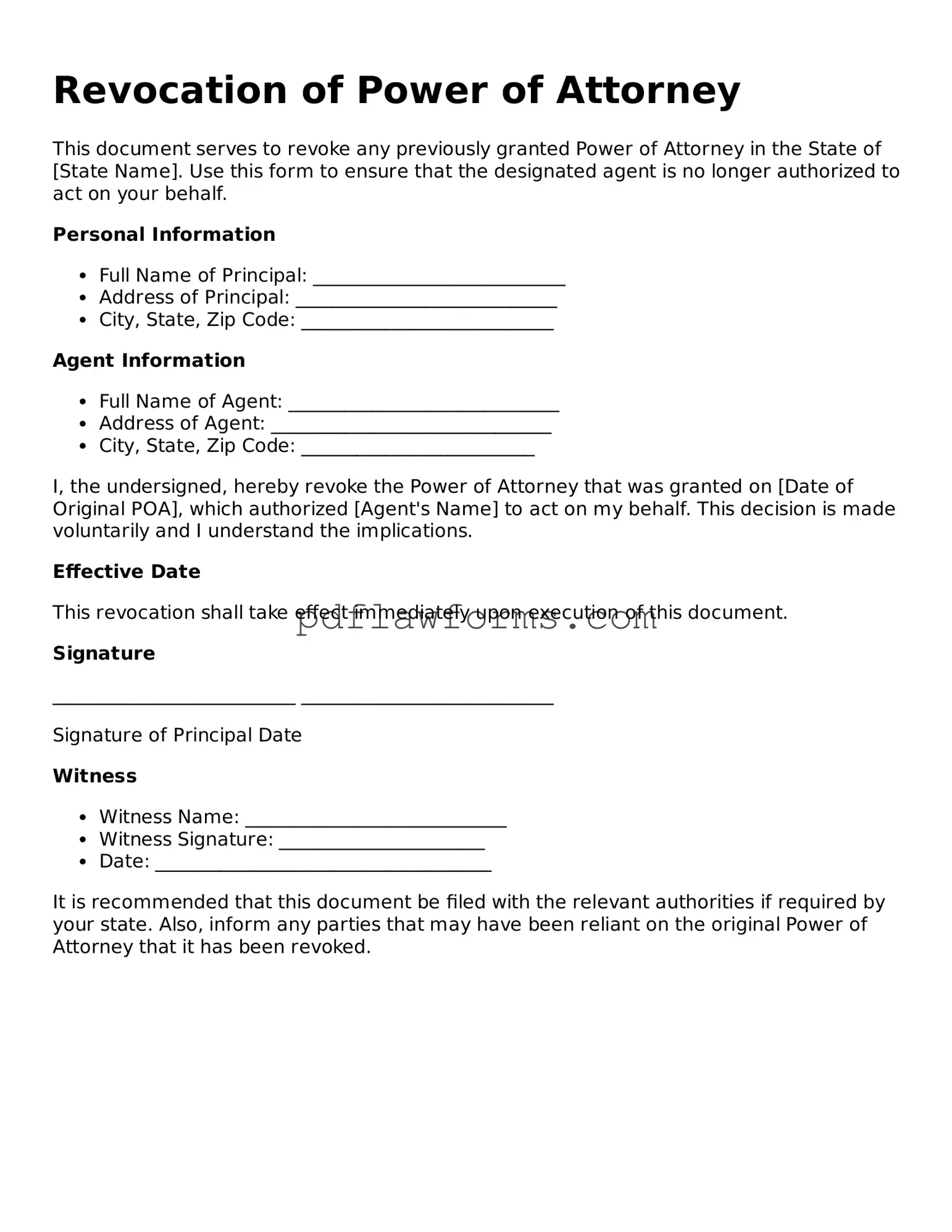When individuals decide to revoke a Power of Attorney (POA), they often encounter a few pitfalls during the process. One common mistake is failing to clearly identify the original Power of Attorney. Without proper identification, such as the date of execution and the names of the parties involved, the revocation may lead to confusion or disputes. Clarity is key in legal documents, and specificity helps prevent potential misunderstandings.
Another frequent error is neglecting to sign the revocation form. A signature is not merely a formality; it serves as a confirmation of the individual's intent to revoke the authority granted. Without a signature, the document may be deemed invalid, leaving the original POA still in effect. Therefore, it is essential to ensure that the revocation is signed by the person who initially granted the power.
People often overlook the need for witnesses or notarization, depending on state laws. Some jurisdictions require that the revocation be witnessed or notarized to be legally binding. Failing to meet these requirements can invalidate the revocation, allowing the original Power of Attorney to remain in force. It is advisable to check local laws to ensure compliance.
Another mistake involves not providing notice to the agent or attorney-in-fact. After revoking a Power of Attorney, it is crucial to inform the person who held the authority. If they remain unaware of the revocation, they may continue to act under the assumption that their powers are still valid, potentially leading to unauthorized actions.
In some cases, individuals may use vague language in the revocation form. Ambiguity can create uncertainty about which powers are being revoked. A clear and direct statement indicating the intention to revoke the Power of Attorney helps eliminate any potential confusion. This clarity is especially important if there are multiple POAs involved.
People sometimes forget to retain copies of the revocation document. Keeping a copy is essential for personal records and can serve as proof if disputes arise in the future. Without documentation, it becomes challenging to demonstrate that the revocation was executed properly.
Additionally, individuals may not consider the implications of revoking a Power of Attorney. It is important to understand that revocation does not automatically cancel any actions taken by the agent while the POA was in effect. Individuals should be aware of any transactions or decisions made prior to the revocation, as these may still hold legal weight.
Finally, a lack of legal advice can lead to significant mistakes. Consulting with an attorney can provide valuable insights into the revocation process. Legal professionals can help ensure that all steps are taken correctly and that the revocation is valid and enforceable. Seeking guidance can save time and prevent complications down the road.
